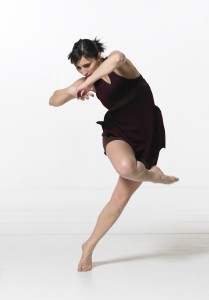The dance form is illusive to many, at times, including me. The maven is Shirley Mordine. With her namesake company performing for an astounding 42 years, plus her creation in ’69 of The Dance Center of Columbia College and the fact that she’s mentored, taught or worked with pretty much everyone in the city’s modern community – Mordine is nothing short of a force of nature. This weekend, Mordine & Co. Dance Theater, along with RE|Dance Group and mentee Alitra Cartman, will be performing its spring concert NEXT 2011 at the Ruth Page Center. On the program: a revival of Mordine’s 2009 work Illuminations, a trio The Mysterious Disappearance of the Second Youngest Sister by RE|Dance’s Michael Estanich, Mordine & Co’s Emerging Artist Mentee for 2011, Alitra Cartman’s new work and the world premiere of Mordine’s LifeSpeak.
Sitting in on rehearsal last week, I was fascinated by how the group worked. There seemed to be an unseen force guiding the process, an energy connecting them all physically, mentally and emotionally, so that everyone was on the same page without saying anything. Of course, the initial source was Mordine herself, quietly interjecting notes while the group ran through the pieces. Speak to us…tell us the story. Use your phrasing, rhythmic sense. If you hear yourself landing, your not absorbing your weight. Play with your weight, don’t force it. The dancers — and this is an impressive group of six – take in the corrections on the fly, evolving as they go. *Side note: It was especially nice to see Atalee Judy, a unique and strong presence, dancing. I haven’t seen her perform in quite a while (my mistake), but I’m still reeling from a duet she create a million years ago with Robbie Cook involving straight jackets.
It was a treat to finally meet the Modern Maven I’d heard so much about over the last 15-or-so years. I have to say, I’m smitten. Here are some excerpts from our conversation.
RB: 42 years – can you give me some insight into why you think this company has lasted this long?
SM: I’ve never been asked this question. I think it’s persistence, for one thing. I always say that when I’m about ¾ of the way through the piece I’m working on, I know what I want to explore next. You explore that area and that stimulates another kind of curiosity. I think that’s the reason. I’ve had some really solid groups of companies…really excellent people. I think they come to understand that there really is an aesthetic operating here that has continuity to it, that has a clear focus to it.
RB: You mentioned “next” and what’s next, is that why you titled the show NEXT?
SM: This started about three years ago and we decided to make it an annual event. We usually premiere some new work and include our mentoring project. I like to invite companies perhaps that haven’t been seen as much, companies that maybe are a little younger and could stand some exposure. It becomes more than just your company. First of all, it’s great for audience development. But you’ve got the mentoring project, and work from another company and our work. We always try to do something new. It’s a little collage of performances and it opens it up, so it’s not just exclusively a company performance.
RB: How did you pick RE|Dance?
SM: Michael was a mentee of mine many years ago when we were at The Dance Center, and he had gone off to Ohio State and got his masters and is working professionally and is now teaching at a college in Wisconsin, but he’s beginning to show work here in this area. I went to see Michael and Lucy’s (Vurusic Riner) performance at Hamlin Park two or three months ago. I just think he’s a really fine young choreographer. He’s the kind of kid I like to give more exposure.
RB: Tell me about the new work, the world premiere.
SM: I’ve done a lot of work that has to do with giving power to your voice…that has to do with a sense of insurgency and that undervoice would always come through. It will out time you eventually. Look at what’s happening in the Middle East. Here are people, that for the first time, can sense that their voice means something. It took me back immediately to what theater is fundamentally. You’ve got a group of people sitting in a circle, whatever culture…and they’re telling stories to each other. It’s completely natural. If one pulls back and gesticulates a little bit, you’ve got theater. That’s what we come from, telling stories to each other. Then you start thinking how stories evolve. (Laughing) We are all the best liars in the world. I was playing with that phenomenon of how stories come about and how information changes and how they evolve into something else. We really worked through a difficult process with the dancers discovering how to tell their own stories. That’s not an easy thing to help them figure out how to embed sensation and information and then work it through gesture that is not literal, but that, to me, is dance. I’m always curious as to what someone has to say. I’m always curious about information, how it transforms and changes. That’s always been my impulse in most of my work.
RB: For Life Speak, what was the process like?
SM: My dropping words, improvising to drop sensation, learning the skill of not interpreting that, but the sensation itself having physical reality. And that, of course, is the ultimate example of abstraction. You’re not demonstrating, but feeling…just trust the feeling coming through. I’m curious how people examine and look at information, especially kinetically because that’s my field.
NEXT 2011, April 29 & 30 at 8 pm
Ruth Page Center for the Arts
Tickets: 800.838.3006 or brownpapertickets.com

